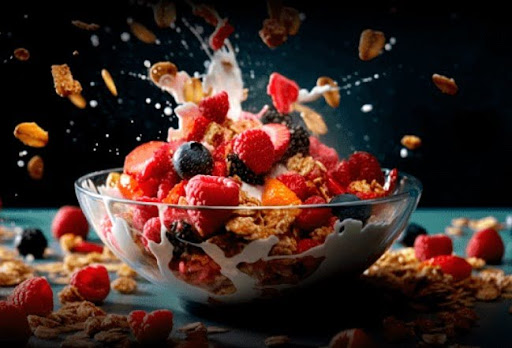The global breakfast cereal market was worth $38.12 billion in 2024 and is expected to grow steadily. It is projected to reach $40.01 billion in 2025 and expand further to $58.35 billion by 2032, with an annual growth rate of 5.54%. North America led the market in 2024, accounting for 45.64% of total sales. In the U.S., the market is expected to see strong growth, reaching an estimated $20.82 billion by 2032, driven by the introduction of new cereal flavors and innovative products.
Introduction
Breakfast cereals are a staple in many households worldwide, offering a convenient and often nutritious meal option. Over the years, the market for breakfast cereals has grown significantly, driven by evolving consumer preferences, new product innovations, and a rising demand for healthy food options.
History of Breakfast Cereals
The origin of breakfast cereals dates back to the 19th century when people sought healthier and more digestible alternatives to traditional heavy breakfasts like meats and fried foods. The first commercial cereals were developed in the United States by dietary reformers like Dr. John Harvey Kellogg, who created cornflakes, and C.W. Post, who introduced Grape-Nuts. These early cereals were marketed as health foods to promote better digestion and overall well-being. By the early 20th century, breakfast cereals became widely popular, with manufacturers introducing new varieties, flavors, and marketing strategies to appeal to a broader audience.
Types of Breakfast Cereals
Breakfast cereals are generally classified into two main categories: ready-to-eat (RTE) cereals and hot cereals.
1. Ready-to-Eat Cereals
RTE cereals are pre-cooked, processed, and dried, making them convenient for immediate consumption. They come in various forms, including flakes, puffs, granola, and muesli. Popular brands such as Kellogg’s, General Mills, and Nestlé dominate this segment with products like cornflakes, wheat flakes, and chocolate-flavored cereals.
2. Hot Cereals
Hot cereals require cooking or mixing with hot water or milk before consumption. These include oatmeal, cream of wheat, and porridge. They are rich in fiber and are often considered a healthier breakfast option due to their whole-grain content and minimal processing.
Production Process of Breakfast Cereals
The manufacturing of breakfast cereals involves several steps, including ingredient selection, processing, and packaging.
1. Ingredient Selection
Common ingredients include whole grains like corn, wheat, rice, and oats. Additional elements such as sweeteners, vitamins, minerals, and flavorings are added for taste and nutritional enhancement.
2. Processing Methods
- Extrusion: Used for puffed cereals, where grains are cooked under high pressure and then shaped into different forms.
- Flaking: Grains are cooked, rolled, and toasted to create flakes.
- Shredding: Whole grains are shredded into small pieces and baked to form shredded cereals.
- Puffing: Heat and pressure expand grains into light and crispy textures.
3. Fortification and Enrichment
To enhance nutritional value, many breakfast cereals are fortified with essential vitamins and minerals such as iron, calcium, and B vitamins. This makes them particularly beneficial for children and adults who may have dietary deficiencies.
4. Packaging and Distribution
After processing, cereals are packed in airtight containers to maintain freshness. They are then distributed to supermarkets and stores worldwide.
Nutritional Aspects of Breakfast Cereals
Breakfast cereals can be a healthy part of a balanced diet when chosen wisely. However, their nutritional content varies significantly depending on the ingredients and processing methods.
1. Health Benefits
- High in Fiber: Whole-grain cereals promote digestion and help prevent constipation.
- Rich in Vitamins and Minerals: Fortified cereals provide essential nutrients, including iron, calcium, and folic acid.
- Convenient Source of Energy: Carbohydrates in cereals offer a quick energy boost, making them ideal for breakfast.
2. Concerns and Criticism
Despite their benefits, many commercial breakfast cereals contain high amounts of sugar, artificial flavors, and preservatives. Excessive sugar consumption can contribute to obesity, diabetes, and other health issues. Consumers are increasingly looking for low-sugar, organic, and whole-grain alternatives.
Future of Breakfast Cereals
The future of breakfast cereals lies in innovation and adaptation to changing consumer preferences. As health awareness increases, manufacturers focus on producing more nutritious, low-sugar, and plant-based options. Sustainable practices, digital marketing, and direct-to-consumer sales are expected to shape the industry’s growth.
With the rise of functional foods, future cereals may include probiotics, high-protein content, and superfoods like chia seeds and quinoa. Additionally, personalized nutrition based on dietary needs and AI-driven food recommendations may redefine how consumers select their breakfast options.




